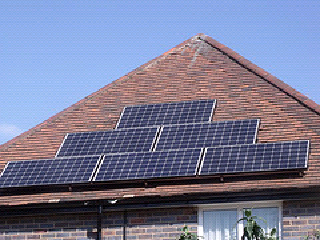Since moving into a new house a few years ago, we've been slowly replacing the ordinary light bulbs with energy-saving ones.
Everything has gone reasonably well, but there are a few lessons learned. As they seem to be the same things that turn other people off low energy lamps, I thought they were worth sharing.
CFLs
 |
| A CFL Bulb Image credit: Nroose |
Firstly, they were not very bright, especially for the first few minutes. This was a problem on the stairs - but it was easily cured by buying a slightly higher powered bulb. It still uses less energy than the filament bulb it replaced.
Second were the energy costs to transport the bulbs all the way from China, where most of them seem to be made. I eventually found some made in Hungary, which is at least closer to home; though they probably go by road, so I can't really tell if they're greener.
LEDs
LED bulbs use less energy than CFLs, they switch on instantly, and they don't need to "warm up" to give their full brightness. |
| LED bulbs Image credit: Fcancela |
More modern LED bulbs are rated at 3 watts and above. There are some that are designed to mimic the warm colour of a normal bulb, rather than the brilliant white light normally associated with LEDs. And, in a contrast to normal energy saving bulbs, I found I could get away with a lower powered bulb than I expected, even though it was one of the "warm" ones.
LED bulbs cost a lot more than CFLs (£15 upwards), but they use even less energy and last a very long time. I calculated that they'll pay for themselves in a few years in our kitchen, where they have replaced halogen downlights.
 |
| A bright idea! Image credit: Oscarjosue |
Replacement
I tried to replace the old bulbs only when they blew. Despite the fact that the newer bulbs use less energy, there's still a lot of energy used in their manufacture. Besides which, there's no point throwing away something in working order!The Verdict
I'm convinced that energy-saving bulbs *can* work well. But as with many things, it helps to have a bit of insight, and not pay too much attention to marketing hype.
Image credits:
"Cuerpo humano jaqaru" by Oscarjosue, CC-BY-SA licence. Obtained via http://commons.wikimedia.org/wiki/File:Cuerpo humano jaqaru.jpg.
"Compact fluorescent straight" by Nroose, public domain. Obtained via http://commons.wikimedia.org/wiki/File:Compact_fluorescent_straight.jpg.
LED lights based on an original image "Green Ray Lights" by Fcancela, Free Art Licence 1.3 Obtained via http://commons.wikimedia.org/wiki/File:Green Ray Lights.jpg.

